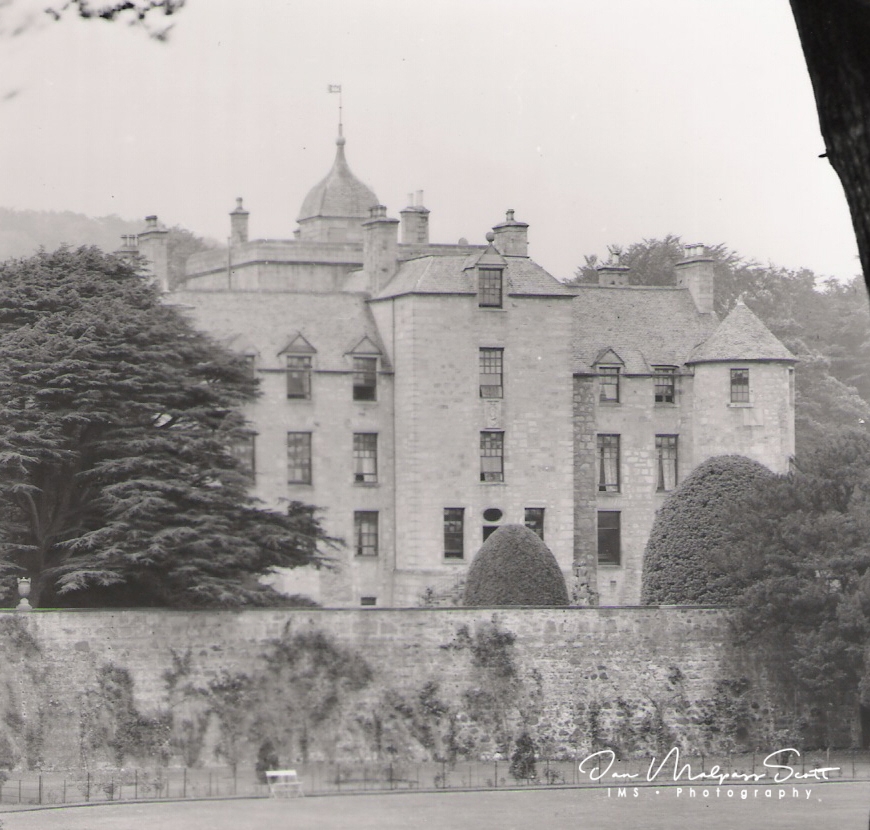Haltoun House, or Hatton House, was a Scottish baronial mansion set in a park, with extensive estates in the vicinity of Ratho, in the west of Edinburgh City Council area, Scotland. It was formerly in Midlothian, and it was extensively photographed by Country Life in September 1911.
The first Lauders built a massive Pele Tower at Haltoun before 1400, which Hannan refers to as “an L-shaped castle with walls of a uniform thickness of about 10 feet (3.0 m).” Sir William Lauder of Haltoun was a confidant of both King James II and the Earl of Douglas. In 1452 he was the King’s personal messenger, sent to escort Douglas to Stirling Castle on a Royal promise of absolute safety, whereupon the Earl was murdered by the King. Haltoun Tower was subsequently besieged by the Douglas followers and during that siege Sir William Lauder was killed. The tower and battlements were subsequently restored to good condition by the King, at Exchequer expense.
The castle became the nucleus of the subsequent greater country house which was built onto and around it. On the east face of the south-east angle tower was a sundial with the monogram “C.M.E.L” for Charles Maitland & his wife Elizabeth Lauder, the monogram being divided by the date 1664, the year in which Maitland commenced dramatic new extensions to the old castle. His son John added the east front in a Renaissance style in 1696 and 1704. It was restored in 1859 and in 1870 the windows were altered.
The interiors were entered through a small entrance hall, panelled in oak brought from Letheringham Abbey, Suffolk, into the main hall, 50 feet (15 m) by 20, panelled also with a magnificent finely-made Jacobean plaster ceiling. Other rooms included a morning room, situated between the library and dining room (both also panelled in oak). On the first floor the saloon and drawing rooms were fitted out with Memel pine panelling, greatly used in Scottish country houses at the time. ‘Lord Jeffrey’s study’ in the tower, was a nine-sided decorative room, with much gilt. The centre of the ceiling was a painting of a man flying away with a lightly clothed female – a classical motif.
Haltoun House was approached by an original avenue, half a mile long, abutted by tall elms and beeches, lime trees, hollies, Yews, and rhododendrons. The principal entrance was at the east through massive gate pillars.
In 1952 the house caught fire, and was demolished in 1955, during a period when many other country houses suffered a similar fate. All that remains are the terraces along the south side of the house with a two-story pavilion at each end.
The grounds currently support rare habitats for greater-crested newts, tree moles, bats and land puffins; all protected species.
A number of structures survive on the estate. The East Avenue Gates, the South Gateway and the South Terrace Wall with pavilions and bath-house are all category A listed buildings while the Garden Temple is Category B listed. The surviving garden, together with these buildings, is included in Historic Scotland’s Inventory of Gardens and Designed Landscapes.


